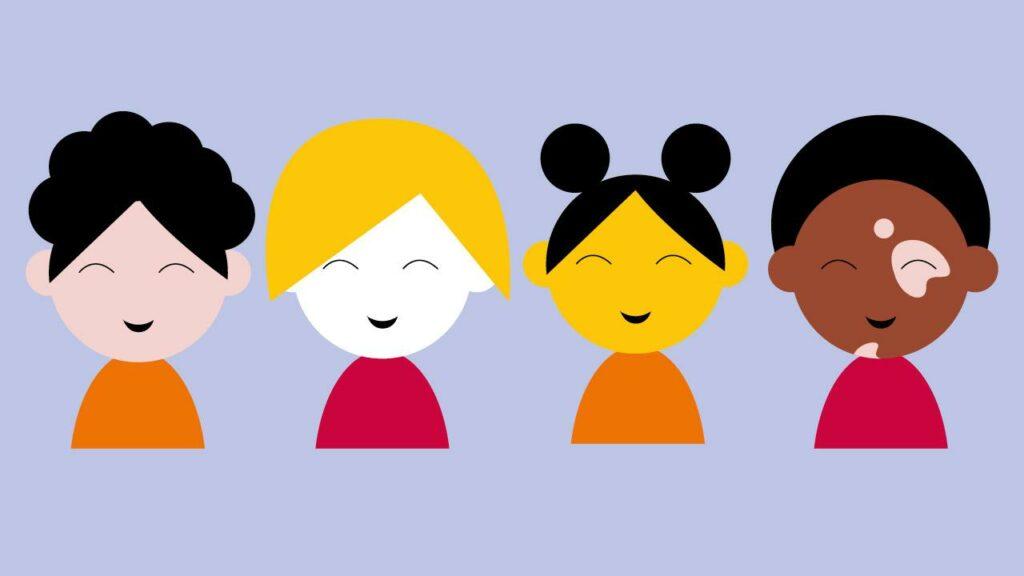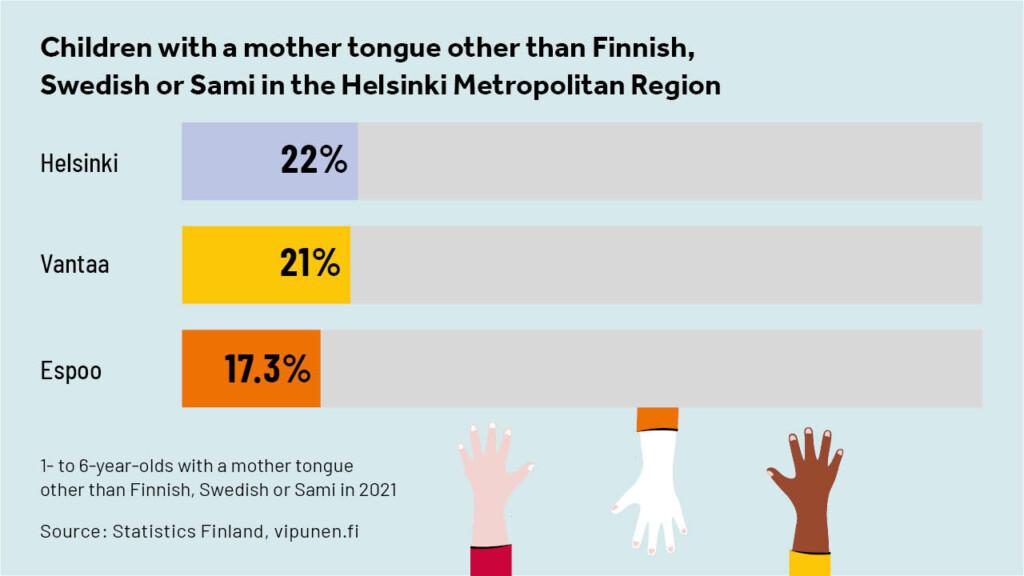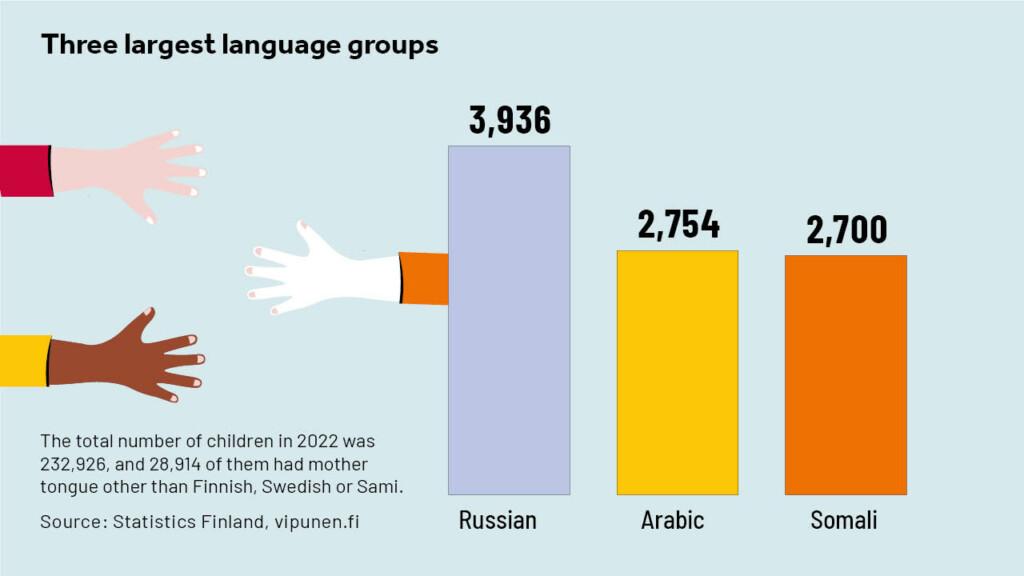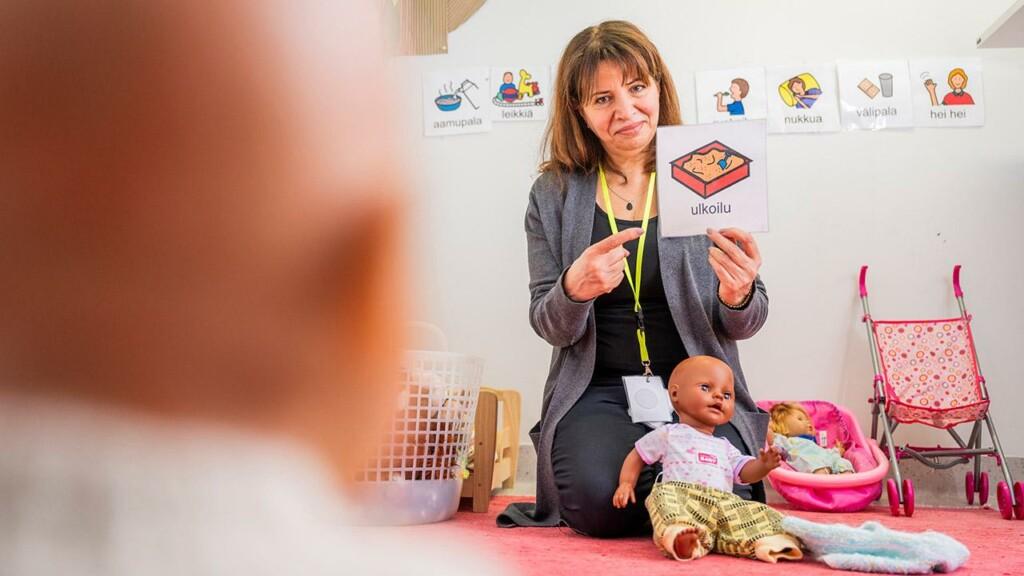The seeds of Finland’s growth: Early childhood education and care support multilingual children in brand new ways

The number of multilingual children in Finland grows rapidly, and that requires new skills from the people who work in early childhood education and care.
Original article written in Finnish by Hanna Kangasniemi Images: Adobe Stock Reading time: 4 mins
At the same time as the birth rate in Finland is declining (news article in Finnish), the number of multilingual children is growing.
This change can be observed also in early childhood education and care, where the needs of multilingual children have to be considered right from the start. It has a major impact on how the children experience feelings of being outsiders or belonging in the group as they grow up.
In the end of the year 2022, 12.4% of children attending early childhood education and care in Finland had a mother tongue other than Finnish, Swedish or Sami. The proportion is even higher in the Helsinki Metropolitan Region and other big cities.
“Many people who work in early childhood education and care studied at a time when language-aware and linguistically responsive pedagogy were not yet taught,” says Mirjam Kalland, professor of early childhood education in the University of Helsinki.
This means that new ways of working are often learned and developed at work.

Language is the key to equality
Early childhood education and care aim to be inclusive. This means being equal and non-discriminatory and engaging everyone. Language awareness has a big role in this.
In language-aware early childhood education and care inclusion means that languages are present in everything. People who work in early childhood education and care need to consider the significance of the children’s own language in their development and learning and more broadly in identity formation and in belonging to the society.
How can this be achieved in the hustle and bustle of daily work? Kalland encourages employees to create together their ways of working with multilingual child groups. These ways of working are the starting point for all the children to be seen equally.

Story times help to create sense of belonging
Sense of inclusion and belonging can be increased for example through shared story times. Mirjam Kalland leads the Saga project of the University of Helsinki. The goal of the project is to support children’s linguistic, social and emotional development with shared stories and discussions.
In this experiment project, support is provided in the form of stories, and the words that are used in the stories are discussed with the children.
Read more: Nursery school teacher Thu Huynh was inspired and became a day care centre shop steward
What does hurry mean? How does it feel? What other words would the children in the group use to describe this feeling? Is the meaning of these words always quite the same? Discussions like this can be supported with key word signing or pictures of emotions, which help the participants to understand each other and discuss things together.
The most important thing is to create a feeling that everyone belongs in the group.
Reading stories and discussing them in permanent small groups (four to six children) is powerful. Kalland tells that in the Saga project the children’s positive interaction and empathy increased. At the same time, in as little as ten weeks, aggressiveness and anxiety lessened.
“When the children reflected stories and fairytales together, those also came to their play and increased new kinds of conversation and group formation. The children even formed peer groups by saying things like ‘My mom is just like that, too.’ Some children who had been in their own worlds earlier also joined the groups.”
Support for self-esteem and the child’s own language
Kalland says that it would be a good thing if early childhood education and care groups found common ways to capture all the languages in the group and saw them as a strength.
“The dominant view used to be that only Finnish and Swedish can be spoken in daycare, and everything else is banned. That was exclusionary.”
Everyone needs to feel that they belong to the group and are accepted. Kalland says that language and inclusion, for example, can be strengthened with things like songs and nursery rhymes. Research shows that regular music times support language development, and the songs can be in many languages and from many cultures.
The most important thing is to find the means for supporting the development of multilingual children’s self-esteem and linguistic and cultural identity. This, and the support for social and emotional development in general, develops also the children’s capability to study in school.

Multilingual instructors help to overcome obstacles
Early childhood education and care teams can get support for planning the ways they work in multilingual daycare centres. Helsinki, for example, has had multilingual instructors for over three years now. These instructors work both in early childhood education and care and in comprehensive schools. Recently five multilingual instructor positions have been made permanent.
Multilingual instructors help the collaboration between home and daycare centre to run more smoothly and explain the families’ and children’s needs and points of view to the staff. They may also organise clubs and set up games that engage the children and promote group formation. The instructors move between daycare centres as needed, and they may for example come to talk in a parents' evening.
Multicultural staff brings cultural understanding in the work community.
“The instructors support primarily the children but also the staff and families in order for the child to be able to participate in the activities of the daycare centre in the best possible way. It can be helpful for families coming from other cultures to get information on how things work in the Finnish daycare centres,” tells Eeva Tiihonen, who is an early childhood education district manager in Helsinki.
More and more people working in early childhood education and care have a multilingual background. Kalland sees this as an advantage. When the employees are also from different cultures and multilingual, the children grow up in a community that mirrors the society where they are going to live.
Multicultural staff brings versatile cultural understanding in the work community. That increases profound know-how and helps to make wise decisions.